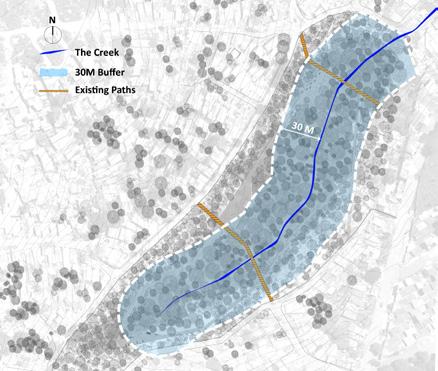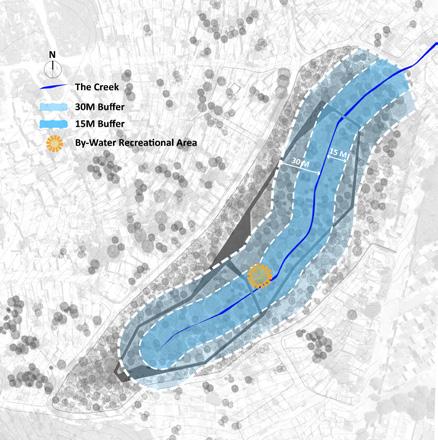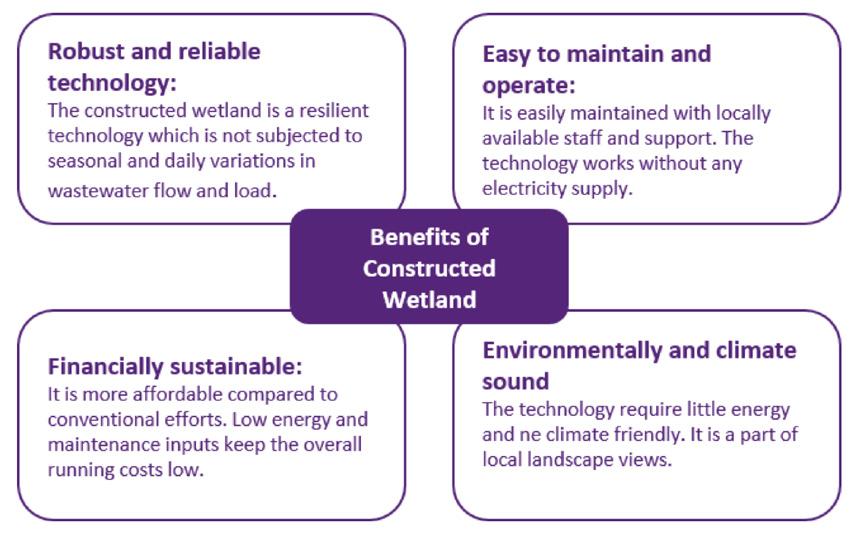
1 minute read
Constructed Wetland
109 Phase One Buffer.

110 Two Buffer Strips in the Long Run. use and activity. As environmental conditions improve, buffers can become more flexible to allow residents into the area to enjoy the scenery.
CONSTRUCTED WETLAND
The constructed wetland is another important strategy to prevent further pollution in the creek area. Constructed wetlands are “engineered systems, designed to utilize the natural functions of wetland vegetation, soils, and their microbial populations to treat contaminants in surface water, groundwater or waste streams” (Technical and Regulatory Guidance Document for Constructed Wetlands, 2003) The Taubman Team proposes constructed wetlands surrounding the periphery of the creek as the first line of protection, which can filter and absorb the pollutants from the runoff water that reaches the creek.
The constructed wetland has several benefits that can be compared to a conventional treatment system (see figure 28). Constructed wetlands are a robust and reliable technology, easy to maintain and operate, financially sustainable, and environmentally sound (Constructed Wetland in Vidrare, Bulgaria, 2011). Wastewaters flow through the wetlands, filtering suspended solids and trace metals. Plants and organic material also provide many benefits, such as absorbing trace metals, providing food and nutrients to organisms, and producing oxygen. This complex biochemical process filters and purifies the wastewater (Constructed Wetland Factsheet, n.d.).
Referring to similar cases (Constructed Wetland in Vidrare, Bulgaria, 2011) and landscape engineering requirements
CASE STUDY: Constructed wetland, Vidrare, Bulgaria
In 2007, a center for people with disabilities in Vidrare, Bulgaria, wanted to build a treatment plant for the domestic wastewater. They decided to build a constructed wetland for wastewater treatment on the center’s property, recognizing the great advantages of this efficient low-tech strategy. The construction began in October 2010 and was finished in April 2011. An appointed staff member is responsible for the maintenance of the constructed wetland. The total cost for the project was €45,000; however, the center took into consideration both, the initial investment and the longterm benefits, when deciding to implement this project. Long-term benefits include the constructed wetland’s effectiveness and efficiency to deal with wastewater issues (Constructed Wetland in Vidrare, Bulgaria, 2011).

111 Constructed Wetland in Vidrare, Bulgaria.

112 Benefits of Constructed Wetland.






